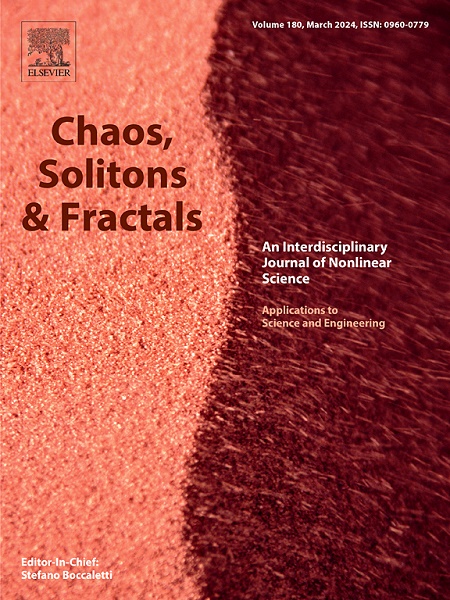Modeling, response and BPNN-PID control of symmetric multistable galloping energy harvesters
IF 5.3
1区 数学
Q1 MATHEMATICS, INTERDISCIPLINARY APPLICATIONS
引用次数: 0
Abstract
In this paper, the modeling and response characteristics of a symmetric multistable galloping energy harvester (GEH) are studied, meanwhile, the controlled performance with the BPNN-PID control method is explored. The improved Lindstedt-Poincaré method is used to derive the relationship between amplitude and frequency, which is then verified through multi-scale analysis. The results indicate that under different excitation amplitudes, the GEH presents nine different solutions, demonstrating four unstable and five stable solutions. The stability analysis reveals the variation of response region and its complexity under different excitation levels. Wind speed and excitation amplitude are optimized to achieve higher output over a wider frequency range. Then, to realize the high-energy output, the PID controller and BPNN-PID controller are designed to guide the trajectories of the GEH from low-energy orbit to high-energy orbit accurately. Compared with the traditional PID control, the BPNN-PID controller demonstrates superior adaptability and robustness by adjusting PID parameters through the online learning ability of the neural network. Although the BPNN-PID controller has certain fluctuations during the initial learning phase, this fluctuation is due to the transition phenomenon in the learning process of the neural network. After the controller is shut down, the GEH can successfully stabilize on the target orbit, which indicates that the network can effectively learn the dynamic characteristics of the GEH, and shows the excellent performance of the controller in long-term stability. The BPNN-PID control not only achieves precise control but also adapts to the nonlinear dynamics of the GEH, making it more suitable for complex and variable operating conditions compared to the traditional PID control.
对称多稳态振荡能量采集器的建模、响应及BPNN-PID控制
本文研究了对称多稳态驰骋能量采集器(GEH)的建模和响应特性,并对BPNN-PID控制方法的控制性能进行了探讨。采用改进的lindstedt - poincar方法推导了振幅与频率的关系,并通过多尺度分析对其进行了验证。结果表明,在不同的激励幅值下,GEH有9种不同的解,其中4种为不稳定解,5种为稳定解。稳定性分析揭示了在不同激励水平下响应区域的变化及其复杂性。风速和激励幅度进行了优化,以在更宽的频率范围内实现更高的输出。然后,为了实现高能输出,设计了PID控制器和BPNN-PID控制器,实现了GEH从低能轨道到高能轨道的精确制导。与传统的PID控制相比,BPNN-PID控制器通过神经网络的在线学习能力来调整PID参数,具有较好的自适应性和鲁棒性。虽然BPNN-PID控制器在初始学习阶段有一定的波动,但这种波动是由于神经网络在学习过程中的过渡现象。控制器关闭后,GEH能够成功稳定在目标轨道上,表明网络能够有效学习GEH的动态特性,显示了控制器在长期稳定方面的优异性能。BPNN-PID控制不仅实现了精确控制,而且适应了GEH的非线性动力学特性,与传统PID控制相比,更适合复杂多变的工况。
本文章由计算机程序翻译,如有差异,请以英文原文为准。
求助全文
约1分钟内获得全文
求助全文
来源期刊

Chaos Solitons & Fractals
物理-数学跨学科应用
CiteScore
13.20
自引率
10.30%
发文量
1087
审稿时长
9 months
期刊介绍:
Chaos, Solitons & Fractals strives to establish itself as a premier journal in the interdisciplinary realm of Nonlinear Science, Non-equilibrium, and Complex Phenomena. It welcomes submissions covering a broad spectrum of topics within this field, including dynamics, non-equilibrium processes in physics, chemistry, and geophysics, complex matter and networks, mathematical models, computational biology, applications to quantum and mesoscopic phenomena, fluctuations and random processes, self-organization, and social phenomena.
 求助内容:
求助内容: 应助结果提醒方式:
应助结果提醒方式:


